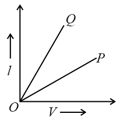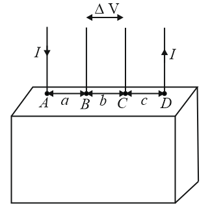EASY
CUET (UG)
IMPORTANT
Earn 100
A wire is stretched so as to change its diameter by . The percentage change in resistance is
(a)
(b)
(c)
(d)
50% studentsanswered this correctly

Important Questions on Current Electricity
EASY
CUET (UG)
IMPORTANT
EASY
CUET (UG)
IMPORTANT
EASY
CUET (UG)
IMPORTANT
EASY
CUET (UG)
IMPORTANT

HARD
CUET (UG)
IMPORTANT
i) Take current entering from and assume it to spread over a hemispherical surface in the block.
ii) Calculate field at distance from by using ohm's law , where is the current per unit area at .
iii) From the dependence of , obtain the potential at .
iv) Repeat (i), (ii) and (iii) for current leaving and superpose results for and .

For current entering at , the electric field at a distance from is
EASY
CUET (UG)
IMPORTANT
EASY
CUET (UG)
IMPORTANT
EASY
CUET (UG)
IMPORTANT
